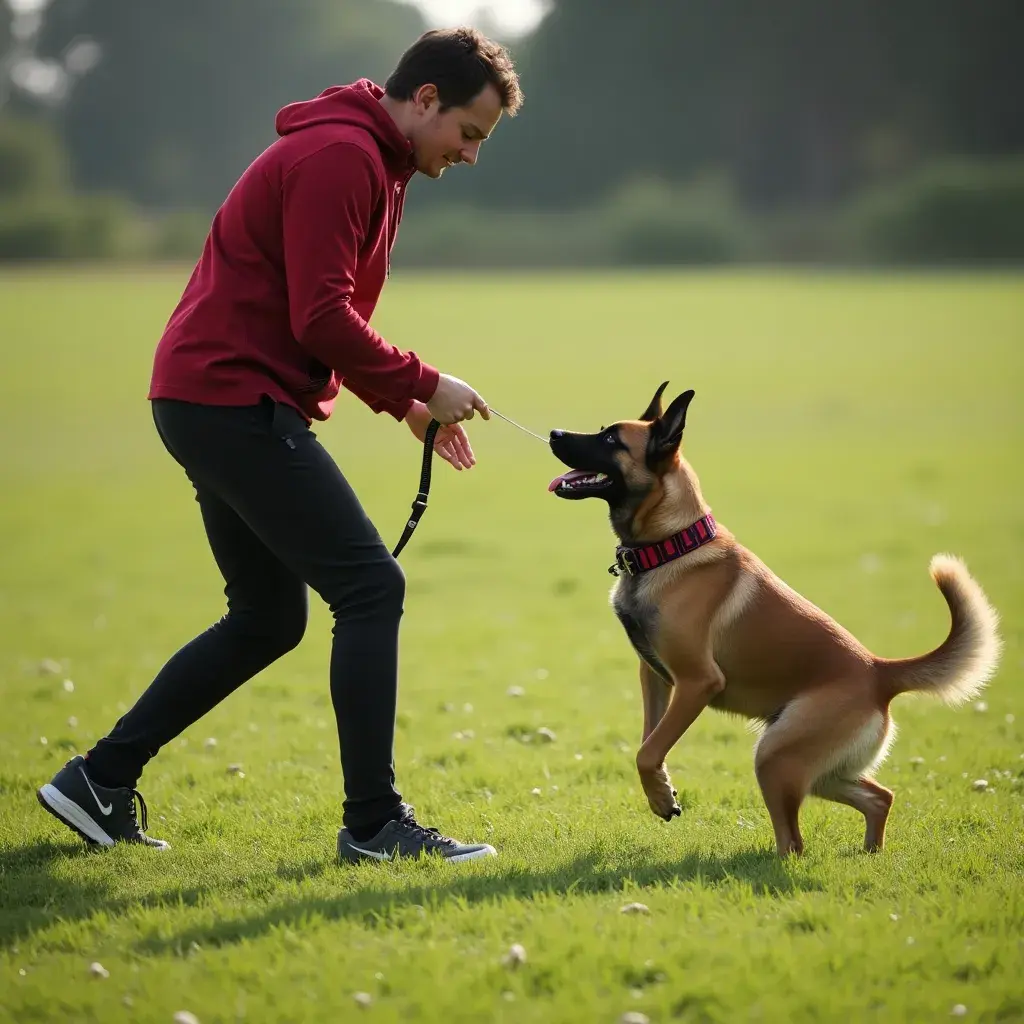Introduction
Are you struggling to manage your dog’s behavior or teach them essential obedience skills? A board and train dog training program might be the solution you’re looking for. These programs offer intensive, professional training by experienced canine trainers, ensuring your furry friend receives the attention and guidance they need.
In this guide, we’ll explore everything you need to know about board and train programs—from how they work to their benefits and what to expect. Whether you’re dealing with a stubborn puppy or addressing complex behavioral challenges, this ultimate guide will help you decide if a board and train program is the right choice for your beloved pet. Let’s dive in!
What Is Board and Train Dog Training?
To learn more about the benefits and details of board and train programs, visit this informative resource on dog training.
Definition of Board and Train Programs
Board and train programs, also known as “doggie boot camps,” are specialized dog training services where your pet stays at a professional training facility for a set period, typically ranging from one to four weeks. During this time, professional dog trainers work intensively with your dog to address specific behavioral challenges, teach obedience skills, or reinforce good manners.
These programs are designed to provide a structured environment where dogs receive consistent training throughout the day. Unlike traditional training methods, where owners actively participate in the sessions, board and train programs allow trainers to work directly with the dog in a controlled and distraction-free setting. This hands-on, immersive approach helps dogs learn faster and retain their training better.
Who Are These Programs For?
Board and train programs are particularly suitable for:
- Owners with busy schedules who cannot commit to daily training sessions.
- Dogs exhibiting serious behavioral issues, such as aggression or extreme anxiety.
- Puppies or adult dogs needing foundational obedience skills.
- Owners seeking professional help to accelerate their dog’s learning process.
Key Features of Board and Train Programs:
- Tailored Training Plans: Trainers customize programs to meet the dog’s specific needs, whether it’s leash manners, recall training, or behavior correction.
- 24/7 Supervision: Dogs are monitored closely to ensure their safety and well-being throughout their stay.
- Socialization Opportunities: Dogs interact with other pets in controlled environments to build confidence and improve their social skills.
- Owner Involvement: At the end of the program, trainers provide detailed instructions and follow-up guidance to help owners reinforce the training at home.
Board and train programs are an excellent solution for pet parents seeking professional, results-driven training in a condensed timeframe. However, it’s essential to choose a reputable facility that aligns with your training goals and values to ensure the best results for your dog.
Overview of How Board and Train Programs Work
Board and train programs are structured to provide dogs with a focused, immersive training experience in a professional setting. These programs are tailored to address various needs, from basic obedience to correcting complex behavioral issues. Here’s a detailed breakdown of how they typically work:
1. Initial Consultation and Evaluation
The process starts with a thorough consultation and assessment:
- Behavior Assessment: Trainers evaluate the dog’s behavior, temperament, and specific challenges, such as aggression, separation anxiety, or disobedience.
- Owner’s Goals: Owners share their training objectives, whether it’s teaching basic commands, improving leash manners, or addressing destructive habits.
- Training Plan Development: A personalized training plan is designed to target the dog’s unique needs while aligning with the owner’s expectations.
This phase ensures that both the owner and trainer are clear about the program’s goals and outcomes.
2. Onboarding and Acclimation
Once enrolled, the dog is introduced to the training environment:
- Adjustment Period: Dogs are given time to acclimate to the new surroundings, trainers, and routines. This helps reduce stress and creates a positive foundation for training.
- Bond Building: Trainers build trust with the dog, which is essential for effective learning and behavior modification.
3. Daily Training Sessions
The core of the program involves intensive daily training sessions:
- Structured Schedule: Dogs follow a consistent schedule that includes training, exercise, rest, and socialization.
- Focus on Key Behaviors: Trainers work on specific areas such as sit, stay, recall, leash walking, crate training, or addressing behavioral issues.
- Training Techniques: Positive reinforcement, rewards, and behavior shaping are commonly used methods to encourage desired behaviors.
Dogs receive one-on-one attention during training, ensuring they progress at their own pace.
4. Socialization and Enrichment Activities
Socialization is often integrated into the program:
- Controlled Interactions: Dogs are introduced to other dogs or people in a safe, supervised manner to build confidence and improve social behavior.
- Environmental Exposure: Training may involve exposure to different environments, such as parks or urban areas, to ensure the dog remains well-behaved in various situations.
Enrichment activities, such as puzzle games or interactive toys, are also included to keep the dog mentally stimulated.
5. Progress Monitoring and Adjustments
Throughout the program, trainers monitor the dog’s progress:
- Behavior Tracking: Trainers keep records of the dog’s development and adjust the training plan if needed to address challenges or reinforce specific behaviors.
- Regular Updates: Owners are kept informed about their dog’s progress through videos, photos, or reports, helping them stay connected to the process.
6. Transition and Owner Training
At the end of the program, the focus shifts to ensuring the dog’s training transitions effectively to their home environment:
- Final Training Sessions: Trainers work with owners to teach them how to reinforce and maintain their dog’s newly learned skills.
- Customized Guidance: Owners receive detailed instructions, tips, and tools (e.g., commands, cues, or training aids) to ensure continued success.
- Follow-Up Support: Many programs offer post-training support, such as follow-up sessions or consultations, to address any concerns and reinforce training outcomes.
Board and train programs are designed to provide a transformative training experience for dogs while offering convenience and expertise to owners. By combining intensive training with consistent structure and professional guidance, these programs often deliver results that are difficult to achieve with traditional training methods alone.
Types of Behaviors Commonly Addressed in Behavioral Training
Obedience
- Obedience is one of the primary focuses in many behavior training programs. It involves teaching pets, particularly dogs, to respond to basic commands such as “sit,” “stay,” “come,” and “heel.” Obedience training helps establish a strong bond between the pet and the owner by fostering communication and trust. It ensures that the pet behaves appropriately in various situations, whether it’s at home, on walks, or in public spaces. Reinforcing obedience is crucial for the safety of both the pet and others, as it helps the pet follow commands in potentially risky scenarios, such as when approaching a busy road or interacting with other animals.
Aggression
- Aggression in pets, especially in dogs, is a common behavior that often needs addressing in training programs. Aggressive behavior may manifest as growling, biting, snapping, or lunging. It can arise from fear, territorial instincts, lack of socialization, or even medical issues. Identifying the root cause of aggression is essential in determining the best approach to manage and modify it. Training techniques may include desensitization, counter-conditioning, and positive reinforcement, all aimed at reducing aggressive tendencies and promoting calmer, more manageable behavior. Early intervention is crucial to prevent aggression from escalating into dangerous situations for both the pet and others.
Socialization
- Socialization is a vital aspect of a pet’s development, particularly during their early months of life. It involves exposing the pet to various environments, people, animals, and experiences in a controlled manner to ensure they develop well-adjusted and confident behaviors. A lack of socialization can result in fear or anxiety around unfamiliar situations, leading to behaviors like excessive barking, hiding, or even aggressive reactions. Training programs that focus on socialization help pets learn how to interact appropriately with other animals and humans, reducing fear-based reactions and improving overall behavior in different contexts. Socialization is ongoing and should be reinforced throughout a pet’s life to maintain healthy behavior in various social situations.
Differences Between Board and Train and Traditional Training Methods
Board and Train Method The Board and Train method involves sending your dog to a professional trainer’s facility for a set period, typically a few days or weeks. While at the facility, the dog stays and trains with the trainer daily. This method is great for dogs that need focused training or owners who are too busy to train at home.
Advantages:
- Dogs get intensive, uninterrupted training.
- Owners don’t have to manage training sessions themselves.
- It’s ideal for dogs with serious behavior issues that need quick fixes.
Disadvantages:
- Owners aren’t involved in the training process, which can make it hard to continue training at home.
- The cost is higher because it includes both boarding and training.
Traditional Training Method In Traditional Training, the dog stays at home, and the owner participates in the training. The dog is trained during private lessons or in group classes, often in familiar settings like your house or nearby parks.
Advantages:
- Owners learn to train their dogs and manage behaviors themselves.
- Training happens in real-life situations, which helps dogs adjust to daily life.
- More affordable than Board and Train.
Disadvantages:
- Owners must commit time to regular sessions and practice at home.
- Progress can be slower, especially if the owner is inconsistent.
Key Differences
- Board and Train offers quick, focused training away from home, while Traditional Training happens at home with the owner’s active involvement.
- Board and Train is more expensive, while Traditional Training is typically more affordable and flexible.
This expansion provides a more detailed comparison between the two methods, helping readers understand the practical implications, benefits, and potential drawbacks of each.

